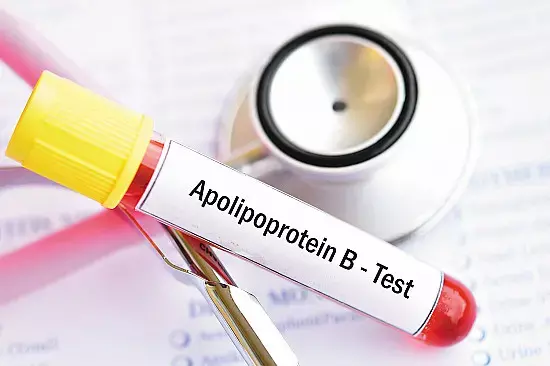- Home
- Medical news & Guidelines
- Anesthesiology
- Cardiology and CTVS
- Critical Care
- Dentistry
- Dermatology
- Diabetes and Endocrinology
- ENT
- Gastroenterology
- Medicine
- Nephrology
- Neurology
- Obstretics-Gynaecology
- Oncology
- Ophthalmology
- Orthopaedics
- Pediatrics-Neonatology
- Psychiatry
- Pulmonology
- Radiology
- Surgery
- Urology
- Laboratory Medicine
- Diet
- Nursing
- Paramedical
- Physiotherapy
- Health news
- Fact Check
- Bone Health Fact Check
- Brain Health Fact Check
- Cancer Related Fact Check
- Child Care Fact Check
- Dental and oral health fact check
- Diabetes and metabolic health fact check
- Diet and Nutrition Fact Check
- Eye and ENT Care Fact Check
- Fitness fact check
- Gut health fact check
- Heart health fact check
- Kidney health fact check
- Medical education fact check
- Men's health fact check
- Respiratory fact check
- Skin and hair care fact check
- Vaccine and Immunization fact check
- Women's health fact check
- AYUSH
- State News
- Andaman and Nicobar Islands
- Andhra Pradesh
- Arunachal Pradesh
- Assam
- Bihar
- Chandigarh
- Chattisgarh
- Dadra and Nagar Haveli
- Daman and Diu
- Delhi
- Goa
- Gujarat
- Haryana
- Himachal Pradesh
- Jammu & Kashmir
- Jharkhand
- Karnataka
- Kerala
- Ladakh
- Lakshadweep
- Madhya Pradesh
- Maharashtra
- Manipur
- Meghalaya
- Mizoram
- Nagaland
- Odisha
- Puducherry
- Punjab
- Rajasthan
- Sikkim
- Tamil Nadu
- Telangana
- Tripura
- Uttar Pradesh
- Uttrakhand
- West Bengal
- Medical Education
- Industry
Apo B, a potential Lipid Predictor of MI Risk: JAMA

According to the American Heart Association (AHA), one in three people will be affected by some form of cardiovascular disease (CVD) during their lifetime. A recent study suggests that the risk of myocardial infarction may best be captured by the number of apoB-containing lipoproteins, independent from lipid content (cholesterol or triglyceride) or type of lipoprotein (low-density lipoprotein or triglyceride-rich). The study findings were published in the JAMA Cardiology on November 13, 2021.
There has been recent debate about how much lipid-associated cardiovascular risk is from LDL cholesterol versus triglycerides. However, genetic studies suggest that apolipoprotein B is actually the primary driver of atherosclerotic risk. To further examine this, Dr Nicholas A. Marston and his team conducted a study to determine whether common measures of cholesterol concentration, TG concentration, or their ratio are associated with cardiovascular risk beyond the number of apolipoprotein B (apoB)–containing lipoproteins.
In this prospective cohort analysis, the researchers included individuals from the population-based UK Biobank and 2 large international clinical trials, FOURIER and IMPROVE-IT. The median (IQR) follow-up was 11.1 years in UK Biobank and 2.5 years in the clinical trials. The researchers assessed two populations in this analysis:
◊ 389 529 individuals in the primary prevention group who were not taking lipid-lowering therapy and
◊ 40 430 patients with established atherosclerosis who were receiving statin treatment.
They evaluated the levels of ApoB, non–high-density lipoprotein cholesterol (HDL-C), LDL-C, and TG. The major outcome assessed was incident myocardial infarction (MI).
Key findings of the study:
- Upon analysis, the researchers found that in the primary prevention cohort, apoB, non–HDL-C, and TG each individually were associated with incident MI.
- However, when assessed together, they found that only apoB was associated (adjusted hazard ratio [aHR] per 1 SD, 1.27). Also, they noted that only apoB was associated with MI in the secondary prevention cohort.
- After adjusting for apoB, they found no association between the ratio of TG to LDL-C (a surrogate for the ratio of TG-rich lipoproteins to LDL) and risk of MI, implying that for a given concentration of apoB-containing lipoproteins, the relative proportions of particle subpopulations may no longer be a predictor of risk.
The authors concluded, "In this cohort study, risk of MI was best captured by the number of apoB-containing lipoproteins, independent from lipid content (cholesterol or TG) or type of lipoprotein (LDL or TG-rich). This suggests that apoB may be the primary driver of atherosclerosis and that lowering the concentration of all apoB-containing lipoproteins should be the focus of therapeutic strategies."
In the accompanying editorial, Allan Sniderman, MD, Ann Marie Navar, MD, PhD, and George Thanassoulis, MD wrote, " The debate is over.. apoB should be the primary marker to assess cardiovascular risk due to apoB lipoproteins".
They point out that LDL and non-HDL cholesterol both become insignificant markers of risk when apoB is taken into account, "demonstrating that the risk of LDL cholesterol and non-HDL cholesterol is fully captured by the number—not the cholesterol content—of the apoB-containing particles."
ApoB can also be used as an alternative to LDL cholesterol as the primary means to screen, diagnose, and manage patients, according to the guidelines of the 2019 European Society of Cardiology/European Atherosclerosis Society. However, ApoB is not currently endorsed by the US guidelines but, can be considered a "risk enhancer" if it exceeds 130 mg/dL.
For further information:
Medical Dialogues Bureau consists of a team of passionate medical/scientific writers, led by doctors and healthcare researchers. Our team efforts to bring you updated and timely news about the important happenings of the medical and healthcare sector. Our editorial team can be reached at editorial@medicaldialogues.in.
Dr Kamal Kant Kohli-MBBS, DTCD- a chest specialist with more than 30 years of practice and a flair for writing clinical articles, Dr Kamal Kant Kohli joined Medical Dialogues as a Chief Editor of Medical News. Besides writing articles, as an editor, he proofreads and verifies all the medical content published on Medical Dialogues including those coming from journals, studies,medical conferences,guidelines etc. Email: drkohli@medicaldialogues.in. Contact no. 011-43720751


